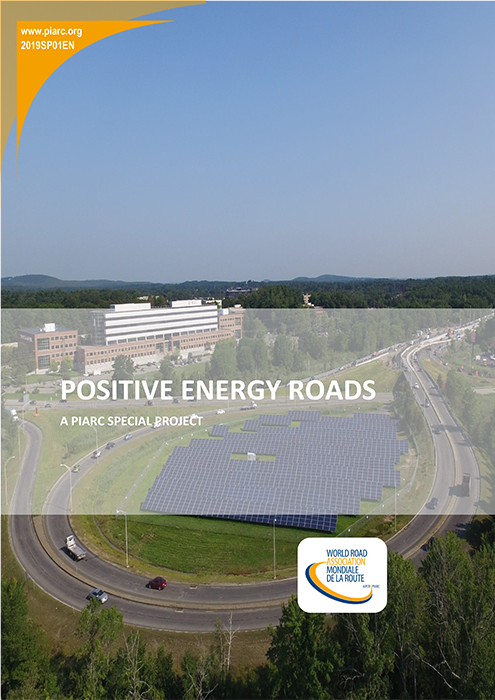Positive Energy Roads

Transport infrastructure, and particularly road infrastructure, is critical to the economic growth of countries and as such attracts significant investment. The social and economic benefits of providing road infrastructure are well documented, but it is increasingly being recognised that the processes by which the infrastructure is designed, constructed, maintained and operated also need to minimise negative impacts such as pollution and greenhouse gas emissions. A key challenge for road transport system managers is the need to improve all aspects of its energy efficiency.
Over the last few decades significant research has been undertaken to make reductions in the amount of energy used by roads and develop innovative systems to make roads into a potential source of energy.
Positive Energy Roads (PER) can fulfil two important needs for road administrations. In remote locations in large countries (including many LMIC countries) where it is either not possible, or it is cost-prohibitive, to connect to an electricity grid, standalone sources of energy offer the potential to install infrastructure that (for example) provides information to users, improves safety, or monitors environmental conditions or asset performance. The typical sources of energy for these applications, solar and wind, are renewable.
PER also has the potential to make a significant contribution to decarbonisation of transport. Increasing global pressure on sustainable development in response to unfolding climate change impacts, and the growing capacity constraints on energy resources make it imperative to reduce use of fossil fuels. Depending on national strategies for renewable energy generation, PER can have an important role both in terms of reducing the overall energy consumption and increasing their potential for power generation that are less dependent on external sources of energy. The ultimate goal is to reach a stage where the road infrastructure is energy neutral or even becomes a net exporter of energy.
This report analyses the potential for generating renewable energy in the road envelope (the right-of-way) to help address the energy requirements of road authorities, including a large variety of renewal energy sources (solar pavements and barriers, wind generation, geothermic…), their cost benefit analysis and their Technological Readiness Level.
Information sheet
- Date: 2019
- Author(s): Maple Consulting Ltd and associates
- Domain(s): Environment
- Type: 2019SP01EN - Special Project
- PIARC Ref.: 2019SP01
- ISBN: 978-2-84060-546-1
- Number of pages: 128